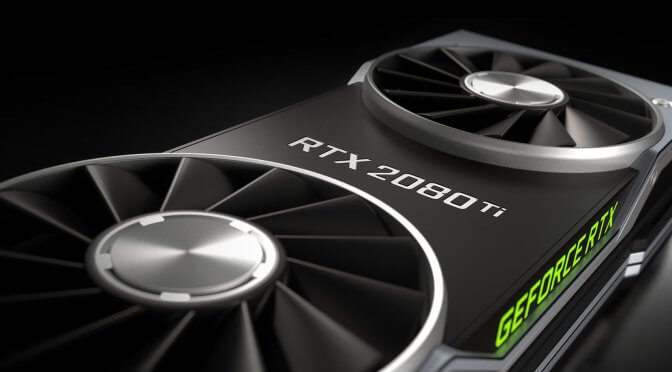NVIDIA today shared its financial results for the fourth quarter of fiscal year 2019, admitting that the sales of its high-end RTX Turing graphics cards were lower than expected. As the green team stated, its previous fourth-quarter guidance had embedded a sequential decline due to excess mid-range channel inventory following the crypto-currency boom.
Furthermore, NVIDIA states that sales of certain high-end GPUs using NVIDIA’s new Turing architecture were lower than expected. According to the green team these products deliver a revolutionary leap in performance and innovation with real-time ray tracing and AI, but some customers may have delayed their purchase while waiting for lower price points and further demonstrations of RTX technology in actual games.
Of course this does not really surprise us. The high-end RTX Turing graphics cards were overpriced compared to their predecessors. Not only that, but there aren’t any games that can actually take advantage of the RTX technology so there is currently no reason at all for customers to replace their high-end GPUs with these brand new ones.
For example, Shadow of the Tomb Raider has not received yet its RTX real-time ray tracing effects, and almost none of the games that NVIDIA claimed that would support DLSS actually support it. Right now, only Battlefield 5 supports real-time ray tracing effects and only Final Fantasy XV supports DLSS. Oh, there is also the new path-tracing version of Quake 2. Other than these games though, there is nothing currently on the market that can take advantage of both the real-time ray tracing effects and the DLSS tech.
John is the founder and Editor in Chief at DSOGaming. He is a PC gaming fan and highly supports the modding and indie communities. Before creating DSOGaming, John worked on numerous gaming websites. While he is a die-hard PC gamer, his gaming roots can be found on consoles. John loved – and still does – the 16-bit consoles, and considers SNES to be one of the best consoles. Still, the PC platform won him over consoles. That was mainly due to 3DFX and its iconic dedicated 3D accelerator graphics card, Voodoo 2. John has also written a higher degree thesis on the “The Evolution of PC graphics cards.”
Contact: Email

